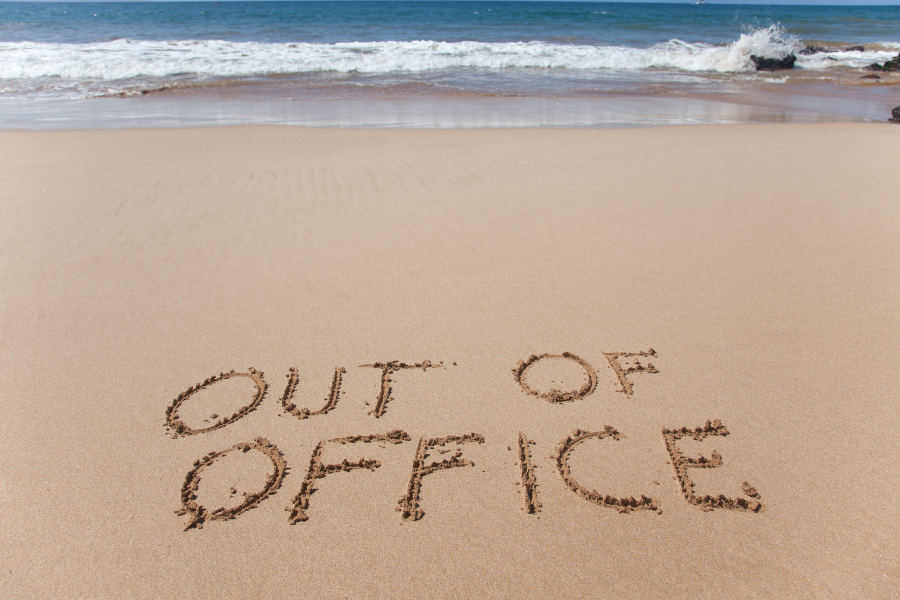Setting up an out of office message in Outlook is quick and easy. But failing to set an OoO response can be a big mistake:
What if one of your team members assumes a colleague is taking responsibility for a key process, but they aren’t? What will happen if a vital client emails you, expecting a reply?
Creating an automatic out of office reply in Outlook might sound like it’s just being polite. But if you or a member of your team chooses not to, it can actually cause you serious problems later down the line.
How do I create an automatic out of office reply in Outlook?
- Select “File” and then “Automatic Replies”
- Click the “Send automatic replies” radio button
- For best results, tick “Only send during this time range” and fill in the dates you will be away
- Select the “Inside my organisation” tab
- Enter your message
- Click “OK”
Note, you can manually turn off your automatic response when you get back to your desk after being away. But using the “Only send during this time range” option prevents later accidents.
Problems and issues setting your out of office reply in Outlook
1) “Anyone outside my organisation”
When setting up your out of office message in Outlook, you will also see an “Outside My Organisation” tab as well as an “Inside” one.
It is worth noting that your out of office response in this tab will be sent to everyone outside of your organisation who emails you. That means junk mail senders, newsletters you’ve signed up to, constant LinkedIn updates – the works.
If you use this option, it might be worth selecting “my contacts only”.
2) I don’t see “Automatic Replies”
In this case, you might be one of those people who has a different version of Outlook. If you don’t see the “Automatic Replies” option under your File menu, you will instead need to use “Rules and Alerts”.
The process for using rules to create an out of office message is a little bit more complex. But only a little. You can find step-by-step instructions over on the Microsoft website.
How do I set up an out of office reply on a team?
If you’re wondering how to set out of office in Teams, the process is very similar. All you need to do is:
- Find your profile picture at the top of Teams
- Click “Set status message”
- Enter your personal message in the space provided
- Choose the date range
- Click “Done”
Why is an out of office message important?
A professional out of office message is an absolute must these days. The accepted normal speed of modern communication means that people expect that you have received their email and will get back to them.
If you don’t, that is potentially a huge black mark against you or your company.
What is a good out of office message?
That’s the “why” and “how” to set an out of office response in Outlook and Teams out of the way. Now, what do you actually write? The key elements of a good out of office message are:
- Thanking the person for their email
- Clarifying the dates you will be away
- Potentially, the reason for your absence if you feel it is relevant
- Assurance that you will get back to them on your return
- An alternative point of contact for urgent business in your absence
Is your team using the Outlook out of office response feature?
Out of office messages are part of business communications 101. This is the sort of thing you or your tech team really needs to be on top of.
If you find that members of your team don’t do vital basic things like setting up an out of office response in Outlook, it’s time for some more staff training. And possibly to call in some outside expertise to deliver it.
Get more handy tips like this deposited in your inbox every month when you sign up to our free newsletter.
If your Microsoft365 problems go beyond a simple out of office message, you should check out our Microsoft365 consultancy service.
Together, we’ll make sure you get the maximum return from the money you are spending on your IT.
ALL ARTICLES
